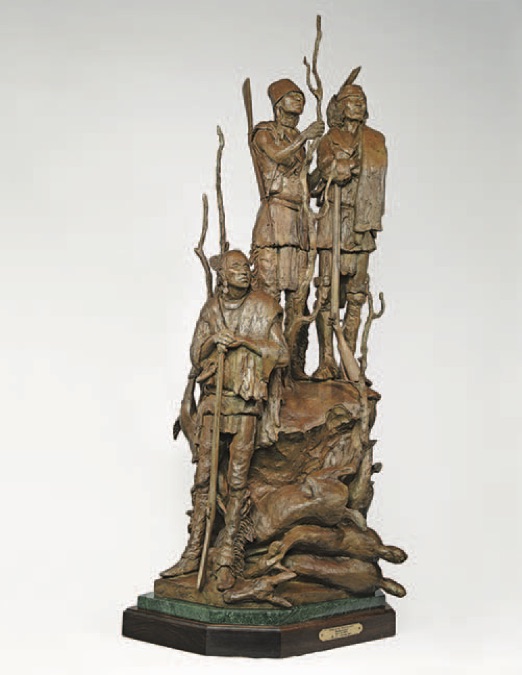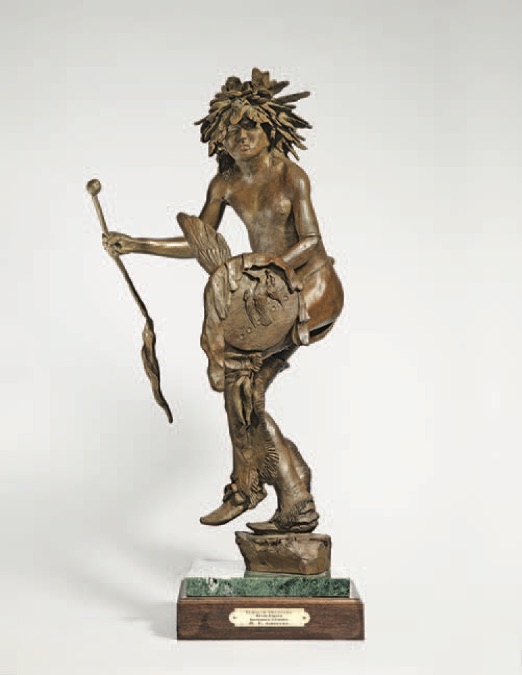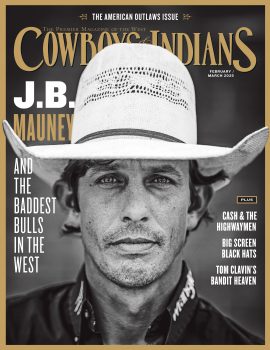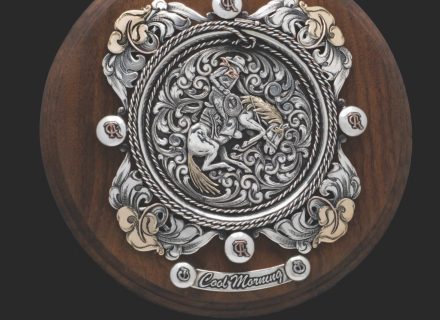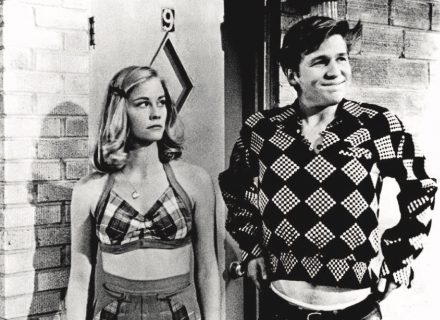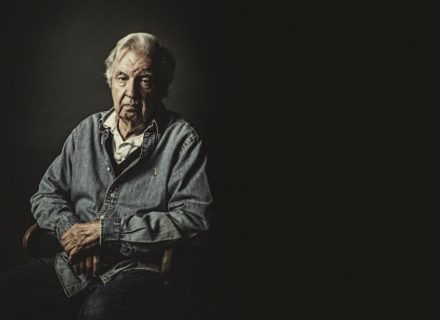Ask acclaimed Western sculptor Richard Greeves about the origins of his career and you’ll get an unusual explanation: “My sister who came after me said there were some drawings on my mother’s womb,” he replies in all seriousness. “I’ve been doing it forever.”
Greeves is the creator of an astonishing, prolific, and award-winning body of work, largely devoted to documenting the life and culture of Native Americans in bronze. “I think you inherit more than the color of your eyes,” Greeves says. “Hopefully I’ve done the right thing with those genes.”
Now 85 and still going strong, Greeves can’t even tell you how many sculptures he’s fashioned during his long career. “A sculptor is different than a painter,” he points out. “A painter puts his image on an existing surface. A sculptor puts something in space that did not exist. So he has to be a builder.”
At his Wyoming studio, Greeves has long focused on creating sculptures, some monumental in size, that portray the American West. His work has won top awards at the National Cowboy Museum’s Prix de West and other prestigious art shows, and his sculptures are displayed and prized by institutions and collectors around the world. A favorite subject is the often-overlooked Indian people Lewis and Clark encountered during their epic Corps of Discovery expedition through then-uncharted lands.
Lewis and Clark began and ended their trip in Greeves’ hometown of Saint Louis, and their historic exploration of President Thomas Jefferson’s vast Louisiana Purchase and beyond to the Pacific Northwest has fascinated the artist since he was a teenager exploring what is now the Missouri History Museum. After landing a job there, he would spend countless unsupervised hours perusing its collection of early frontier artifacts. “By the time I got to be 15, I was busting at the seams with all this knowledge,” Greeves says. “That’s what prompted me to want to come west.”
His destination became Wyoming when the teen visited the state’s booth at a travel show. There he met a young Shoshone girl, who invited him to visit her ranching family on the Wind River Indian Reservation. The 15-year-old Greeves traveled there that summer and moved to the rez for good in his 20s.
Greeves was married to a Kiowa woman when he took the plunge and moved his family. “I don’t know what I’m gonna be doin’ the rest of my life,” he told his first wife. “But I don’t want to be doing it in Missouri. I want to do it in Wyoming.”
Returning to the Wind River Reservation town of Fort Washakie, Greeves reconnected with the rancher whose daughter had invited him to visit. The man had just won in a card game a building that housed a trading post, a cafe, and a meat-packing plant. The rancher sold it to Greeves, and the artist has called the place home ever since.
For years, Greeves ran the businesses during the day and worked on his art at night, often into the wee hours of the morning. The businesses are now long gone, replaced by Greeves’ studio and workshops, spread throughout a sprawling complex — a full third of an acre housed under 26-foot-high ceilings — of connected rooms he calls a “rabbit hutch.” Among the artistic accumulation of his life: shelves and shelves of books, an impressive array of authentic Indian artifacts from the 1800s that serve as props and inspiration for his works, and abundant copies of his cast sculptures. “That’s my inventory,” Greeves explains.
Attached to the complex is the comfortable and spacious home Richard shares with his wife, Stephanie. Inside, the house is beautifully decorated with a wide variety of fine Western art. Outside, his sculptures adorn an enclosed courtyard garden. The centerpiece of it all is Greeves’ personal gallery, a museum-quality space professionally displaying dozens of his Native sculptures — all but two inspired by the journals of Lewis and Clark. The brass nameplate on the base of each work includes the date the Indian is mentioned in the journals. The actual models are Greeves’ reservation friends. “Almost all of my pieces, I can single ’em out and take you to one of my neighbors that actually modeled for the piece.”
To his way of thinking, Greeves has been creating for more than his eight-plus decades — and he still loves it. “I’ve been doing it since I was waiting in line to be born,” he declares. “I can honestly say one thing: I’ve really enjoyed life.”
Richard Greeves is represented by Settlers West Galleries in Tucson, Arizona. Gerald Peters Gallery is hosting a one-man show featuring 56 of Greeves’ sculptures inspired by the Lewis and Clark expedition October 2 – December 5 in Santa Fe. Visit the artist on Facebook.
Photography: Images courtesy Gerald Peters Gallery
From our August/September 2020 issue.










